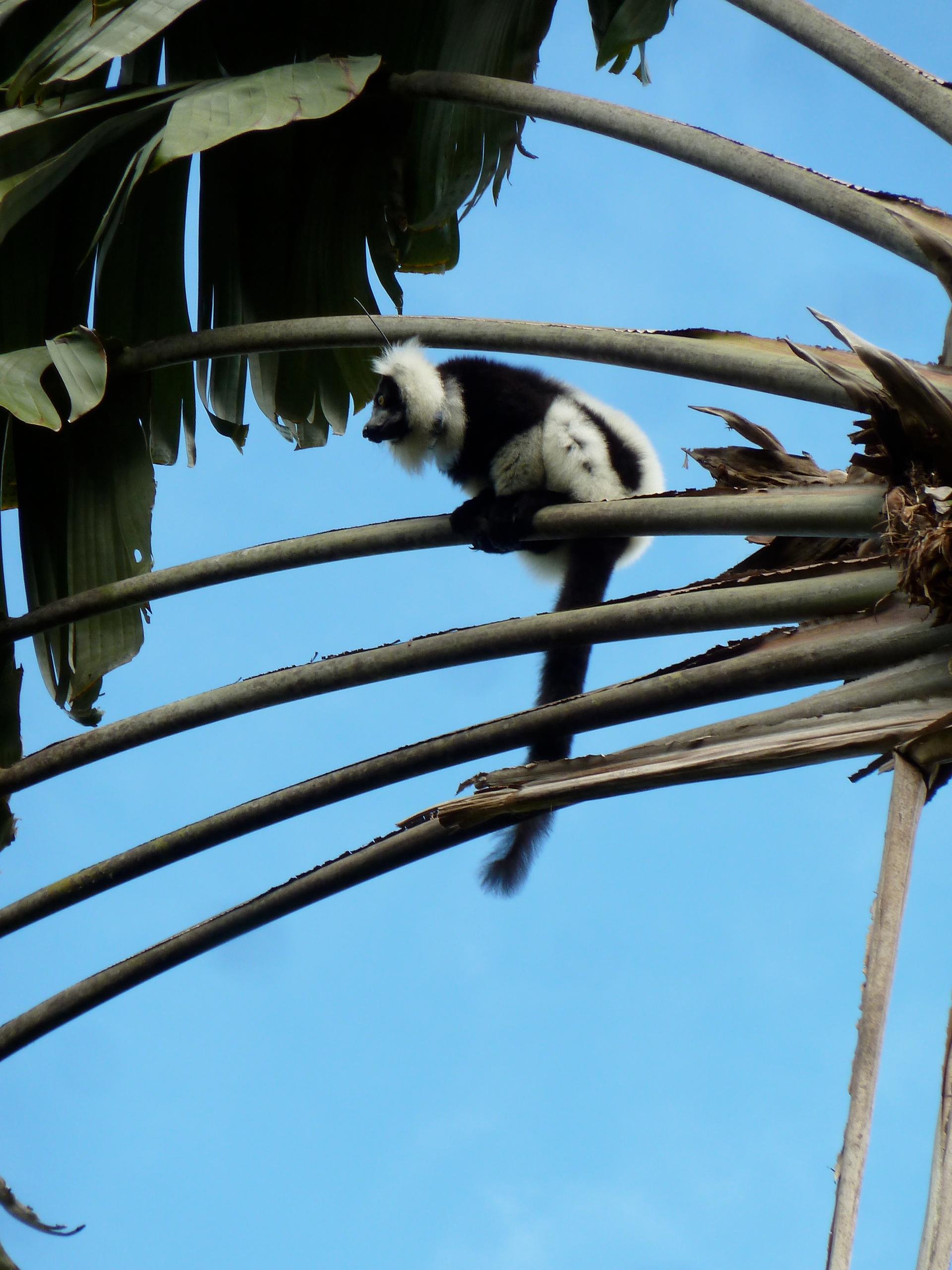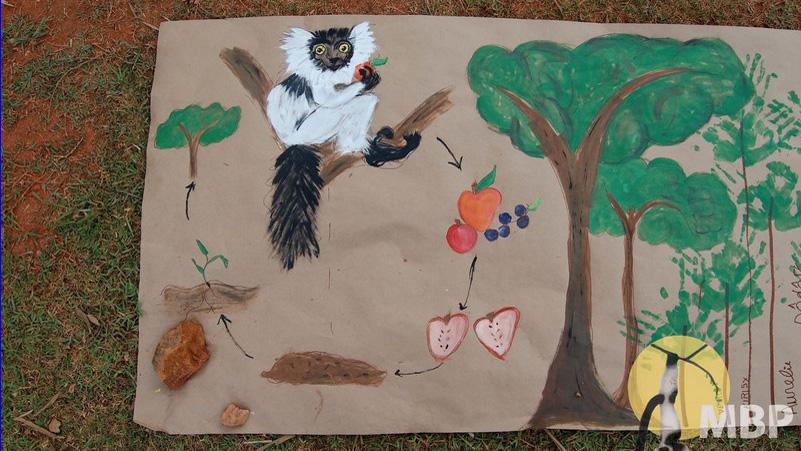Lemur poop might save Madagascar’s forests — and economy
A Madagascar Biodiversity Project poster illustrates the symbiotic relationship between the black and white ruffed lemur and the forests they live in, centered on food and poop. The project aims to use lemur poop to help restore forest habitat for the benefit of lemurs and local people.
From the cackles of roosters on the edge of town, Kianjavato could be just about any village in the developing world. But cast your eyes into the trees here and it’s clear it could only be in one place: Madagascar — southern Madagascar, to be precise.
“This is actually the best place to see the greater bamboo lemur. This spot right here,” says Ed Louis, who splits his time between southern Madagascar and Omaha, Nebraska.
Wild lemurs only live here in Madagascar, the huge island off the coast of southern Africa. But the island’s environment, and its lemurs, are in serious trouble. It's been almost entirely deforested, and many lemur species are critically endangered.
Louis is working to fix at least a small part of that ecological disaster through an innovative effort built around lemur poop. He's a veterinarian and population geneticist at the Henry Doorly Zoo in Omaha for half of each year, but the rest of the time he sniffs out lemur poop here in Madagascar.

Louis casts his eyes toward a group of greater bamboo lemurs lounging in the trees. “We’ll sit here and wait for them to start moving,” he says, “and they will lighten the load, if I can say it that way. They’ll urinate and defecate, and that’s when we’ll get the prize seeds for our reforestation work.”
Lemurs eat a lot of seeds as they forage through the forest. But most of those seeds just pass right on through and out the other end. That’s good news for the forest, Louis says, because the lemurs’ gut linings and digestive enzymes make the pooped-out seeds much more likely to germinate.
He estimates that roughly 90 percent of seeds that pass through a lemur will germinate, while only 1 in 1,000 non-digested ones will sprout a new tree. “If you lose these lemurs, he says, “you’re going to eventually lose the forest.”
Hence the focus on the poop. The pre-digested seeds it contains are the core of Louis’s effort to plant more than 100,000 acres of forest on this part of the island over the next 20 years. It's run through his organization, the Madagascar Biodiversity Partnership.
Forests dominated Madagascar’s landscape as recently as the 1960s, but only isolated pockets of forest — and lemurs — remain. That’s bad news for the lemurs, Louis says.
“We have to have migration and gene flow between these sub-populations,” he says. If not, lemurs are likely to go extinct in the wild. The project aims to reconnect those pockets by creating new forest corridors through which the lemurs can move and interbreed. “That’s the reason we’re doing the reforestation.”
But it isn’t just an environmental effort. Lemurs are a hot ticket in zoos these days, so the hope is that more trees will mean more lemurs in the wild, more lemurs will bring more tourists, and more tourists will bring more income for local people.
In the meantime, the Biodiversity Project is providing new income by employing workers from local villages. They collect the seeds, germinate them, grow them into saplings and then plant them on nearby hillsides.
They earn $2.50 a day for five hours of work. It doesn’t sound like much, but it’s a living wage for people like Nirina, a 34-year-old widow with five kids. Before she got a job with the Biodiversity Partnership, she says, “we couldn’t eat every day and my children couldn’t go to school. Now we eat every day.”
The project has become the largest employer in this region over the last five years. They hope the jobs will give everyone a stake in the success of the forest — from field guides and nursery managers to school children and elders — even if they don't care much about the lemurs.
“Our ancestors didn’t know how to protect the environment,” says 70-year-old Alfred. “They just cut and burned the forest. Now we understand that without trees there’s no rain. Without rain, agriculture will suffer and there will be no food for our families.”
Five years into the 25-year plan, Louis says he's already seeing results. He points to a 50-foot-high tree on what he says was a completely barren hillside just five years ago. It's an acacia, an important tree for reforestation, he says, because it’s fast growing and puts nitrogen back in the soil.
Louis says the lemurs are coming back, too. Five years ago, there were just eight black and white ruffed lemurs here; today, there are more than 50. There are also at least 100 greater bamboo lemurs, up from just 30.
“It’s becoming a forest in front of my eyes,” Louis says. “That’s satisfying, to see something built instead of destroyed.”
Our coverage reaches millions each week, but only a small fraction of listeners contribute to sustain our program. We still need 224 more people to donate $100 or $10/monthly to unlock our $67,000 match. Will you help us get there today?
